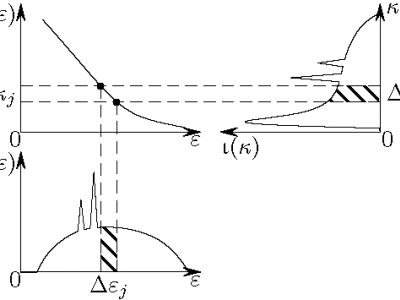Documents
Poster
Blind polychromatic X-Ray CT reconstruction from Poisson measurements

- Citation Author(s):
- Submitted by:
- Aleksandar Dogandzic
- Last updated:
- 14 March 2016 - 6:04am
- Document Type:
- Poster
- Document Year:
- 2016
- Event:
- Presenters:
- Aleksandar Dogandzic
- Categories:
- Log in to post comments
X-ray sources are polychromatic. Ignoring this fact when performing reconstruction leads to artifacts, such as cupping and streaking, in reconstructed images. We first propose a new model parameterization that allows for blind correction of these artifacts and then develop reconstruction algorithms based on this parameterization.
Here, blind correction means that we do not know
- incident spectrum (which is an X-ray machine characteristic) and
- mass attenuation (inspected material).
Why blind? Accurately characterizing X-ray machine and inspected material is not easy or may not be possible. The developed model and algorithms are applicable to nondestructive evaluation (NDE) and medical imaging. This topic is relevant to all X-ray CT applications.
Our NPG-BFGS algorithm is the first physical-model based image reconstruction method for simultaneous blind sparse image reconstruction and mass-attenuation spectrum estimation from polychromatic measurements. NPG-BFGS matches or outperforms non-blind linearization methods that assume perfect knowledge of the X-ray source and material properties.
We have identified and quantified inherent limitations of the blind model, such as the shift ambiguity of the mass-attenuation spectrum. Interesting features:
- Laplace-transform formulation of the noiseless measurements and generalized linear models (GLMs) that follow from this formulation,
- conditions for biconvexity,
- establishment of the Kurdyka-Łojasiewicz property, and
- potential for extension to more general models.
Abstract:
We develop a sparse image reconstruction method for Poisson distributed polychromatic X-ray computed tomography (CT) measurements under the blind scenario where the material of the inspected object and the incident energy spectrum are unknown. We employ our mass-attenuation spectrum parameterization of the noiseless measurements for single-material objects and express the mass-attenuation spectrum as a linear combination of B-spline basis functions of order one. A block coordinate-descent algorithm is developed for constrained minimization of a penalized Poisson negative log-likelihood (NLL) cost function, where constraints and penalty terms ensure nonnegativity of the spline coefficients and nonnegativity and sparsity of the density-map image; the image sparsity is imposed using a convex total-variation (TV) norm penalty term. This algorithm alternates between a Nesterov’s proximal-gradient (NPG) step for estimating the density-map image and a limited-memory Broyden-Fletcher-Goldfarb-Shanno with box constraints (LBFGS-B) step for estimating the incident-spectrum parameters. We establish conditions for biconvexity of the penalized NLL objective function, which, if satisfied, ensures monotonicity of the NPG-BFGS iteration. We also show that the penalized NLL objective satisfies the Kurdyka-Łojasiewicz property, which is important for establishing local convergence of block-coordinate descent schemes in biconvex optimization problems. Simulation examples demonstrate the performance of the proposed scheme.

